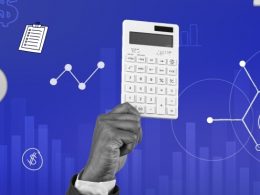Accounting, often referred to as the “language of business”, provides a structured way to capture, represent, and interpret financial transactions. At the heart of accounting lies various components such as liabilities, equity, revenues, expenses, and, of course, assets. But what exactly is an asset in accounting? This article delves deep into that question.
Asset definition
At its most basic, an asset represents something of value. If you have a house, a car, or even a valuable antique vase, you’re looking at assets in the practical sense. But in the realm of accounting, the asset definition becomes more nuanced.
In accounting, an asset is a resource with economic value that an individual, corporation, or country owns or controls with the expectation that it will provide a future benefit. Assets are reported on a company’s balance sheet and are bought or created to increase a firm’s value or benefit the firm’s operations.
In short, assets are the items your company owns that can provide future economic benefit.
Characteristics of assets
What is an asset? There are certain defining characteristics of assets:
Tangibility
Assets can be tangible or intangible. Tangible assets are those that have a physical presence – think buildings, machinery, or inventory. Intangible assets, on the other hand, lack physical substance but are no less valuable. Brand reputation, patents, and copyrights are examples of intangible assets.
Ownership
For an item to qualify as an asset, the entity should have the right of ownership or control over it. Ownership implies that the company can use the asset as it sees fit, and control denotes the firm’s ability to direct the use of and obtain the benefits from the resource.
Economic value
Every asset has an inherent economic value, meaning it can be sold or used to settle debts, commitments, or investments.
Expected future benefit
This is a key feature of assets. Whether it’s a piece of machinery expected to produce goods for several years or a patent that can generate royalty income, assets are held with the belief that they will provide benefits in the future.
Dive deeper into understanding and optimizing your assets. With Synder’s solutions, you can effortlessly track, manage, and streamline your assets and liabilities. Don’t let the complexities hold you back. Try Synder today and empower your asset management strategy!
Types of assets
The classification can sometimes depend on the nature of the business.
Assets are resources owned or controlled by an entity from which future economic benefits are expected to flow. They are central to financial accounting, and understanding the different types is vital for both financial reporting and management decisions. Assets can be classified in various ways, but here are some common classifications:
Based on convertibility
Current Assets
Types of assets that are expected to be converted into cash, sold, or consumed within a year or within the operating cycle of a business, whichever is longer. Examples are:
- Cash and cash equivalents (e.g., treasury bills, money market funds)
- Accounts Receivable
- Inventory
- Prepaid expenses
- Short-term investments
Non-current assets (Long-term assets)
Non-current assets are expected to provide economic benefits over a period longer than one year. Examples of non-current assets are:
- Property, plant, and equipment (PPE)
- Long-term investments
- Intangible assets (e.g., patents, copyrights)
- Goodwill
Based on physical existence
Tangible assets
Assets that have a physical existence and can be seen or touched. Examples are:
- Land
- Buildings
- Machinery and Equipment
- Vehicles
- Inventory
Intangible assets
Assets that lack physical substance. Examples are:
- Patents
- Trademarks
- Licenses
- Copyrights
- Brand Recognition
Based on usage
Operating assets
Assets used in the primary operations of a business. Examples are:
- Machinery used in production
- Inventory for a retailer
Non-operating assets
Non-operating assets are not directly tied to the primary operations of a business. Non-operating assets might generate income but aren’t essential to the core business activities.
- Investment properties
- Marketable securities
Based on life
Fixed assets (or Capital assets)
Fixed assets are assets of a long-term nature that are used in the production of goods or services and aren’t intended for sale.
Wasting assets
Assets that have a limited useful life and can be depleted over time (natural resources such as timber, oil, and mineral deposits).
Financial assets
Financial assets are assets like investments in the equity or debt of another entity, derivatives, and receivables. Examples are:
- Stocks and bonds
- Mutual funds
- Bank deposits
Deferred assets
Expenses that have been paid for but not yet utilized. They are carried on the balance sheet until they are either used or written off.
- Prepaid rent
- Prepaid insurance
Contingent assets
Potential assets that arise from past events and whose existence will be confirmed only by the occurrence or non-occurrence of uncertain future events not entirely within the control of the entity.
Digital assets
A relatively newer classification, these are assets that exist in digital form. Examples are:
- Cryptocurrencies (e.g., Bitcoin, Ethereum)
- Digital art and collectibles
- Domain names
Valuation of assets
Asset valuation is the process of determining the current worth or value of an asset. The methodology and considerations for valuing assets differ based on the type of asset, its intended use, and the specific context of the valuation. Here are some key points about asset valuation:
Purpose of valuation
The reason for valuation often dictates the method used. For instance, assets may be valued differently for merger and acquisition purposes than for financial reporting or insurance claims.
Valuation approaches
- Cost approach: This is based on the cost to replace or reproduce the asset. Depreciated replacement cost (original cost minus accumulated depreciation) is commonly used for tangible assets.
- Market approach: This involves comparing the asset to similar assets that have been recently sold in the market.
- Income approach: This estimates the value based on the future income the asset is expected to generate. The Discounted Cash Flow (DCF) method is a popular method within this approach.
Impairment testing
For assets like goodwill, impairment tests are conducted to ensure they’re not overvalued on the balance sheet. If the current market value of an asset falls below its book value, an impairment loss may need to be recognized.
Liquidity consideration
The ease with which an asset can be converted to cash can influence its valuation. More liquid assets might be valued higher due to their easy convertibility.
External factors
Economic conditions, interest rates, regulatory changes, and industry trends can all influence asset valuations.
Consistency and standards
When valuing assets, especially for financial reporting purposes, it’s essential to adhere to consistent methods and recognized accounting standards like IFRS or GAAP.
Assets vs. liabilities
From an accounting perspective, assets and liabilities are two fundamental components of the balance sheet, representing two sides of the equation that must always be in balance:

Here are the primary differences between assets and liabilities:
Definition
Assets: Resources owned or controlled by a company that are expected to provide future economic benefits. This could be in the form of generating revenue, reducing expenses, or some other benefit.
Liabilities: Obligations of a company to settle an amount in the future as a result of past transactions or events. This might involve paying money, providing services, or delivering goods.
Are you receiving transactions through PayPal? Learn how to send an invoice on PayPal!
Nature
Assets: Represent what a company owns or has a right to.
Liabilities: Represent what a company owes to others. This could be due to borrowing money, purchasing goods on credit, or other obligations.
Economic benefit
Assets: Expected to bring future economic benefits to the company, either by generating cash inflows or by reducing outflows.
Liabilities: Represent future economic outflows – the settlement of liabilities will reduce the company’s resources.
Creation
Assets: Acquired through purchase, investment, or other means of obtaining control.
Liabilities: Arise from past events or transactions, such as borrowing, credit purchases, or receiving services.
Impact on equity
Assets: An asset increase (without a corresponding increase in liabilities) will increase equity. Conversely, a decrease in assets (without a corresponding decrease in liabilities) will result in a decrease in equity.
Liabilities: An increase in liabilities (without a corresponding increase in assets) decreases equity. Conversely, a decrease in liabilities (without a corresponding decrease in assets) increases equity.
Duration
Assets: Some assets have a limited useful life (e.g., machinery depreciates over time), while others might be permanent (like land).
Liabilities: Generally have a definite timeframe for settlement, whether it’s a short-term bill due in 30 days or a long-term loan to be paid over several years.
In essence, while assets provide a measure of the resources controlled by a company, liabilities represent the obligations that the company must fulfill. The difference between a company’s assets and liabilities represents its equity (or net worth), which indicates the residual interest of the owners in the company.
Asset management and its importance
Asset management in accounting refers to the systematic approach to tracking and accounting for tangible and intangible assets owned by an entity. Efficient asset management is crucial for several reasons.
Accurate financial reporting
Correctly accounting for assets ensures that financial statements like the balance sheet provide an accurate representation of a company’s financial position. For example, the correct valuation of assets affects figures such as total assets, equity, and return on assets.
Depreciation and amortization
Tangible fixed assets lose value over time due to wear and tear (depreciation), while intangible assets may lose value due to factors such as expiration of rights (amortization). Properly accounting for this decrease in value ensures an accurate representation of assets’ worth and correct expense allocation over the assets’ useful lives.
Capital budgeting
Asset management helps companies make informed decisions regarding capital expenditure. By evaluating the performance and lifespan of existing assets, companies can decide when to invest in new assets or maintain existing ones.
Taxation
Accurate asset tracking and valuation are crucial for determining tax obligations, especially in relation to capital gains, capital allowances, or credits available for certain assets.
Learn what day of the week the IRS deposits refunds.
Asset maintenance and utilization
Efficient asset management can help businesses identify underutilized assets, which can then be sold, leased, or re-purposed. Additionally, tracking asset conditions can aid in planning timely maintenance, thereby prolonging asset life and preventing unexpected breakdowns.
Risk management
Proper asset management helps companies identify risks associated with their assets, such as potential obsolescence, a need for replacements, or vulnerability to market fluctuations.
Securing financing
Lenders and investors often review a company’s asset management practices and the value of its assets before providing financing. A strong asset base and effective asset management can make it easier for businesses to secure loans or attract investors.
Strategic planning
Understanding the value and performance of assets helps companies in strategic planning. For instance, if a company knows its machinery is nearing the end of its useful life, it can plan for replacements or consider alternative production methods.
Regulatory compliance
Many industries have specific regulations related to asset acquisition, usage, and disposal. Proper asset management ensures that businesses remain compliant with these regulations, avoiding potential fines and legal complications.
Conclusion
In summary, asset management in accounting is fundamental for ensuring a company’s financial accuracy, operational efficiency, and strategic alignment. Assets, in all their forms, reflect the financial health and wealth of an entity. Whether tangible or intangible, current or non-current, assets are the bedrock upon which businesses are built and thrive. Businesses that prioritize this practice are better positioned to maximize the value of their assets, minimize associated risks, and achieve their operational and financial objectives.

.png)




